A few puckered buttocks are pointing towards the place where I am standing. Their owners, kids from six to twelve, rummage through the stream, looking for river shells. Just at that moment, a stone the size of my fist flies next to one of them. “Scusa” in English ‘Sorry’, says the thrower, standing a few meters away, who then immediately continues searching for new stones, which he will use for building a bridge. On a clearing, behind the stream, there are couple of usually very tidy girls, now throwing mud on each other. Everywhere around me, there is the screaming and laughter of children, attesting to the wild game being played out. And what is my task? None. Only watching and helping out in case one of the children asks for it. We are in the middle of ‘Gioco libero’, a free play, which is an everyday part of suburban summercamps in Italian Monza.
Free play lead children on the path to responsibility
Let the children play. It sounds so simple. Maybe even too simple. According to Daniela Conti, CREDA manager, the opposite is true. To provide enough room for children to play freely means losing control over them, in a certain sense. And, according to Daniela, this is exactly what the children of today are missing. ‘Children need space to self-organize, to be themselves and to take responsibility over themselves. In everyday reality, their time is punctually planned. All the time, they have somebody around them, somebody who decides what they will be doing. Not only do adults have to deal with overflowing schedules, the same is now true for our children as well. They go to school, after school it’s sports practice, then, a music lecture follows, perhaps some remedial classes and when they are finally at home, homework. But here in Cascina Mulini Asciutti, that is not the case.’

Homestead by the dried-out mill
Cascina Mulini Asciutti, or „Homestead by the dried-out mill“, is a place in the vast Park of Monza, where the organization has resided for the last four years. The locals consider the park to be the lungs of the whole town – with an area taking almost seven hundred square hectares, it belongs amongst the biggest historical parks in Europe. Paradoxically, for this green pearl, Italians owe their good fortune to Napoleon, who previously occupied the town of the former Italian kingdom at the beginning of 19th century. He let the gardens be surrounded by walls fourteen kilometers long, and these borders have served to save the greenery from the ever expanding city of Monza. The area was designed in such a way to be sufficient, independent of the nearby city. That is the reason why, today, visitors can find many old mills and still functioning farms and homesteads there. Originally, the park was mostly known as a hunting ground for the local gentry. However, the park is now widely known for both its biodiversity and for the local Formula 1 autodrome, found in the north of the park, no matter how opposite these two phenomena might seem.
The homestead by the dried-out mill, where CREDA resides, is in fact not dried-out at all. The origin of its name is still under speculation. One story goes that at the beginning of the 19th century, the French wanted to build the park in a grandiose style, as an agricultural model of the modern era. Later on, when the Habsburgs took care of the park, there was the necessity to rebuilt the already existing and old water mill to have a bigger one. In order to achieve this, the workers diverted the river, and the area of the mill was allowed to dry out during the construction. Local people therefore named the place the „Household of the dried-out mill“ and, well, the name stuck, long after the canal had returned.

The mill was built in 1834 and when CREDA moved in, their mission was to enhance the xultural and natural heritage of this place, expecially restoring the activity of flour and bread production. From 2014 the organization has continued renovating the place and trying to get it going, all of this with the support of various grants from regional and private bodies as foundations. A part of the homestead is reserved for a large garden, a canal, a strip of trees and bushes, a big stone oven and a glade with an apiary.
Thanks to the work done by CREDA and volunteers, the two main buildings of the mill are thriving with life once again and I have the opportunity to live in one of them for 6 weeks. During the day, the place is full of life but in the evening, when the kids, parents, visitors and educators leave for home and the gates of the park close for the public, I am staying in the whole homestead by myself. The water is rustling under my window, propelling the mill wheel as it passes. The cows are mooing from a nearby farm and this is how I came to discover the magic of this place.
The possibility to refurbish one of the two barns has been a crutial step, which to a big extent influenced the course of the organization itself, as Daniela judges. ‘We had to start to think in a more complex way. By moving in here, we also undertook a big responsibility for both the cultural and natural heritage of this place. We want to give people an opportunity to learn more about their roots and also about what steps are required for humanity‘s future,’ says CREDA manager. In this way, the course of the organization has moved from the mission of simple „environmental education“ towards learning for sustainability and responsible citizenship.
Every Sunday visitors crowd through the mill’s gates. There they can partake in a variety of activities, including a guided tour, laboratories for children and opportunities to buy local honey. During the week this area is the base for children in the suburban summer camp, for a variety of school trips and educational programmes. The aim of the Green weeks, which I helped to organize over the course of my stay, is quite simple – to give families an opportunity to leave their children in a beautiful place with loads of greenery, because, according to Daniela, the Monza citizens are lacking in their contact with nature above all else. Over one summer, there are around four hundred kids participating in the Green weeks. Some of them stay for a week, others stay even as long as a month. ‘We try to show people nature in many aspects. It is not only a place to play, but also to care of, and so the children are helping us out in the garden or with general maintenance of the homestead. Together, they learn how to cooperate’ adds the manager and confesses, with a smile and confesses that maybe one week stay isn´t enough.

CREDA organization has a certain ideal nonetheless. ‘We did a long term evaluation of our programmes in Cascina Molini Asciutti, because there are many children who keep coming back every year’ says Daniela. Over the course of years they have followed up with a few of these children and talked to them, asking about their time spent at the dried-out mill. The results of their research? The homestead has stuck fast in the childrens‘ hearts. ‘They say it is their home, a place where they can come back to’ Daniela is smiling.
Green weeks, interlaced by a unifying thread
Each and every Green week follows the same basic plan. From half past eight till nine there are children arriving at the park from all over Monza and its surroundings, where we, four lectures from CREDA, pick them up at the gates of the park, near the neighbouring Villasanta district. Together, we sit down in a circle and we tell each other what lies ahead of us for the day. Monday is always a meeting day. On Tuesday, we learn how to work with ceramics. Wednesday is taken up by a full day cycle trip around the park. On Thursday, we will go to climb a wall and afterwards, the children will have an opportunity to spend a night out in the mill garden. Finally, on Fridays, we bake an afternoon snack which we will all eat later, including the parents. However, there is a thing which keeps changing every week – the story. Every week has a specific theme, there is even a book connected to that theme, which all of us read together with the children. The story serves as a thread, which interweaves all the activities we do througout the week. „If there is the thread, everything makes sense. The same activities, without that thread, would only be games, lacking any deeper meaning. Thanks to the story, the children know why they are here, why they are asked to do something or where all those common activities lead to“ Daniela lists off all the positives of the complexity of the weeks schedule. Through this, she hits the topic I am interested in. I actually found the CREDA organization, besides other things, due to the fact that they mention working with the Real World Learning project, whose key focus is precisely to work towards a unifying educational program.
The model of a hand
Real World Learning is an international educational project, whose main principle is based on, well, a model of a hand. Every finger represents one aspect of education, which no program based on sustainable development should ever forget. If we follow the fingers from the little finger up to the thumb, we find „understanding“, „portability“, „experience“, „the development of competence“ and, finally, „values“. The five fingers are attached to a hand, which symbolizes a frame, a structure which connects all these different aspects and activities into one, compact and complete program. This model of education, used in the context of sustainable development is also found in the Czech republic. Among its partners there are, for example; Sluňákov, the centre of ecological activities in Olomouc, Kapral´s mill in Moravian Karst and so on.

The Hand model was developed by a network of european researchers who have joined the project (www.rwlnetwork.org) and among whom there are some lectures from Italian branch of CREDA. We can find this pedagogical model in the framework for the green camp, expecially in its narration of a sustainability which is manageable to anyone and which can be joyful and fun. Mostly we learn with children to stay in nature, to love the environment of the Park and to practise values such as cooperations, respect and democracy. It is a lot of work, though, and a particularly big job for the lecturers, however“ says Daniela admitting, that this is the challenging part of our work.Nevertheless, Green weeks stick to the story, and focus on the portability of the childrens‘ green experiences to a daily life. The children are supposed to come to realize that they could grow their own vegetables and bake their own cakes at home.
A big part of the learning which is geared towards sustainable development is definitely food management. The menu at the dried-out mill, decided on by Daniela and Lucia, the cook, is always under a high level of parental investigation. „We receive many questions about the food from parents. Whether their children eat enough, what do they actually eat here, what if they wouldn’t want to eat this or that…“ Daniela describes this conversation as a daily considerable point to focus on. There have been some trials of serving only vegetarian food aiming to experience with kids the positive effect on our diet and to reduce meals´ ecological footprint. But then it was decided for a menu in between, with only meat served twice a week because they realized that it was a too strong proposal. Snacks for sure here are ones which help the children learn about a healthy lifestyle, whether it is a piece of fruit, yoghurt or a homemade cake. „We try to talk to people, to do little steps and to show them, that we can consider different options to act for sustainability“ says Daniela.

A foreigner from the east in a matured world
Given my limited knowledge of the Italian language, I spent the first weeks of my six¬week long stay in CREDA mostly as an observer. I watched how the children, who I would othertimes meet with their noses stuck hard to the screen of a tablet, can find a way to entertain themselves in a minute. At the dried-out mill, clams collected from the canal are used as a local currency, and just one hand-hunt under the stone was enough for me to earn myself a massage, which is offered by two girls on a nearby blanket. One clam for a one-minute massage seems like a fair price. In the woods, other children are building huts from sticks, string and an old piece of fabric. On a blossoming locust tree, a little boy hangs a piece of a green cloth instead of a hammock. I admire how much curiousity and creativity I can see in each child. „Where are you from?“ I hear almost every day, frequently from the same kid multiple times. „I come from the Czech republic“ I reply in Italian. „From where?“ asks a little girl, confused. „The Czech republic, it‘s close to Germany“ I explain patiently. „Oh, Czechoslovakia!“ rejoices a nine-year old girl at her knowledge of geography, for which she had probably received an A in school. And so I explain, repeatedly, again and again, that Czechoslovakia doesnt exist anymore, and not only to the children but also to the people of my own age, my colleagues and superiors.
The longer I am in Italy, the more I realize that in many ways, the Czechs are still firmly placed within „Eastern Europe“, at least culturally. I remember from my own childhood, my parents never took much persuasion from me to resort to an „educational“ slap. Every little kid I knew gets a smack on the ass at home and nobody raises an eyebrow about that. But, during my stay, I haven‘t seen even the slightest notion of physical punishment from the Italian parents. I remember a similar experience in both Germany and Austria. Parents there touch their children only to hug them, whilst misbehaviour is handled through conversation and discussion. Even during my first week here, I often caught myself admiring the patience of the parents, and their willingness to let the children do whatever their heart desires, whether it is running around the garden with their socks on or ripping their trousers by climbing the nearest tree.

foto: Marie Drahoňovská (vše)
Similar delights are no news to the lecturers either. Still we need to decide duties and rules with children such as when and for how long to organize a free play section. According to Daniela, the ability of planning one´s own time cannot be simply acquired shortly. Children must learn such a skill slowly step by step because for some, in the beginning, it is unusual to stay all the time in open spaces, in nature, where they are outside all of the time, sometimes even during the night or with bad weather. But, later on, they usually start to love it“ says Daniela. To experience these minor discomforts, Daniela understands, is just another crucial aspect in the development of human competence and, in a larger sense, promotes the portability of these activities to a wider context. „To sleep overnight in a tent is, in some way, very powerful. The children realize what time the sun rises in the morning, realize how humid the night is… It creates a strong emotional experience, which they won‘t forget. Perhaps children will understand better, what it means to stay in uncomfortable conditions“ Daniela states. „I really believe that in this life, we must all learn how to connect our hearts, our hands and our minds, otherwise humanity is doomed to fail“ she adds, and in her eyes, I see a bright spark of determination gleaming back at me.
E-mail: drahonovska@sedmagenerace.cz. Translation from Czech: Iveta Kapičáková. Info about CREDA onlus: www.creda.it.
Pravidla pro komentáře: Redakce Sedmé generace si vyhrazuje právo smazat příspěvek, který nemá nic společného s tématem, obsahuje vulgarismy, rasistické a xenofobní vyjadřování či jiné urážky ostatních, obsahuje spam a komerční reklamu nebo je jinak nevhodný. Porušení pravidel může mít pro uživatele za následek dočasné nebo trvalé znemožnění vkládání dalších komentářů.
Upozornění: Publikovat články nebo jejich části, jakož i zveřejňovat fotografie a kresby z časopisu Sedmá generace nebo z jeho internetových stránek je možné pouze se souhlasem redakce.

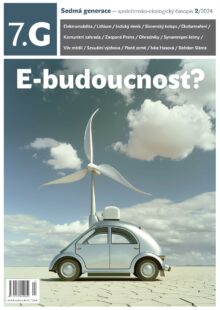

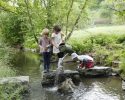
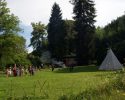
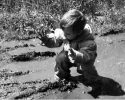
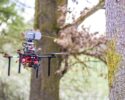
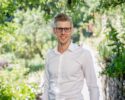
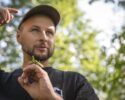
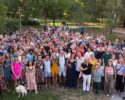
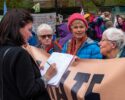

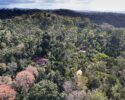
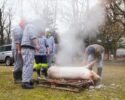
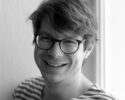
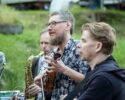
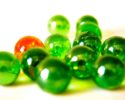

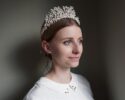
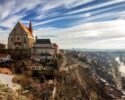
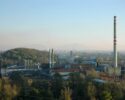
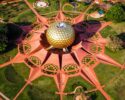

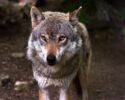
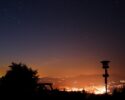

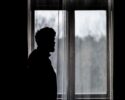
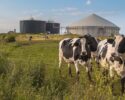
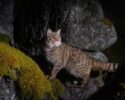

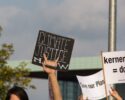
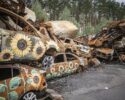
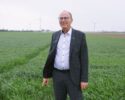
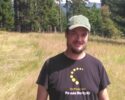
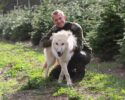


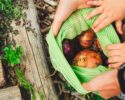
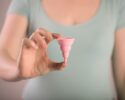
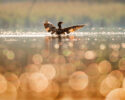
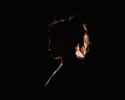
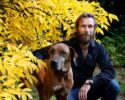
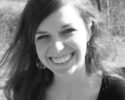

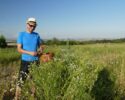
Napsat komentář